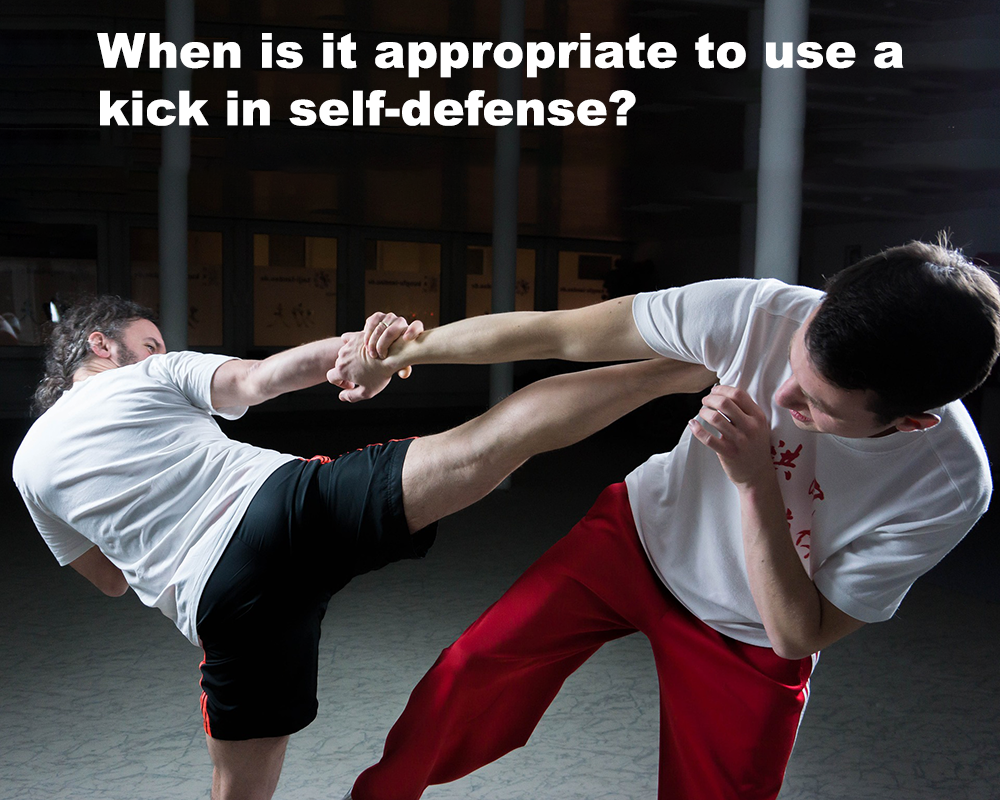
There are many more hand techniques in kata than kicks, and when there is a kick, usually there is only one (there are a few kata with multiple kicks).
.
Kicking is probably the least effective of all the combative methods. Why? Because your motion and stability are severely reduced the instant you take your foot off the floor. In a real confrontation, outside of the dojo, it’s not a good fit for the close-range chaotic world of criminal violence. You are unlikely to have the room, and even if you are a ‘good kicker’ (yes we all know people who can kick high), it’s needlessly risky in an environment where so much is at stake. That is not to say that kicking does not have a role to play, because it does.
.
A key difference between the kicks within kata and their modern offspring, is the height at which they are applied. In modern karate, kicks are generally applied from the waist up due to that fact that this is a requirement of modern rules and safety standards. In real situations, if you decide to kick, it is always better to kick low.
.
The nature of self-defense is entirely different, it’s closer, often faster, more frantic, and the objectives are not the same.
.
It is well known that the kata are self-defense focused. We can therefore say with confidence that jumping head kicks, spinning kicks, feints, and methods that rely on an extended distance, all things we associate with a consensual fight or sparring, are not things considered within kata.
.
The use of your hands are much better than using your feet in several ways, and one of the most important, is that a hand can grab, pull, and lock, as well as strike. The hands are much more versatile.
.
Grappling is well hidden in kata; what most practitioners see is a series of blocks and strikes. But if that’s all they were, then it’s reasonable to ask why there aren’t more foot strikes? If you look at the hand movements from the beginning of the movement to the end, often they are not strikes at all. A grab, a way of controlling your opponent, a joint lock, a release from a grab, a throw etc. the movements flow on to other movements.
.
You use the hands because they put you in control of your opponent in a way that kicks can never do.
.
Kicking has a limited role to play in self-protection situations because there is rarely the space needed. If you do use kicks, they should be used sparingly, they must be powerful, delivered lower than mid-thigh, you have to ensure that you are well balanced, and your opponent is not.
.
It should be remembered that, due to the nature of real fights, delivering an accurate blow is not easy and hence the key thing is to ensure that your kicks are delivered with great force.
.
Maybe the kata contain few kicks because a foot is not the ideal tool to use for self-protection purposes, or simply the ‘far from ideal footwear’ worn. Whichever it is, the best use of kicks in a real fight is once the opponent is unbalanced, held, stunned, or as potential stomps after having thrown or tripped an opponent, to allow you more time to get away.
.
If you’re just sparring or tournament fighting, you miss most of the context. When is it appropriate to use a kick in self-defense? When is it a really BAD idea? IMO, THAT’s what kata’s there to teach.![]()
![]()
.
Image by Marvin Rheinheimer from Pixabay
